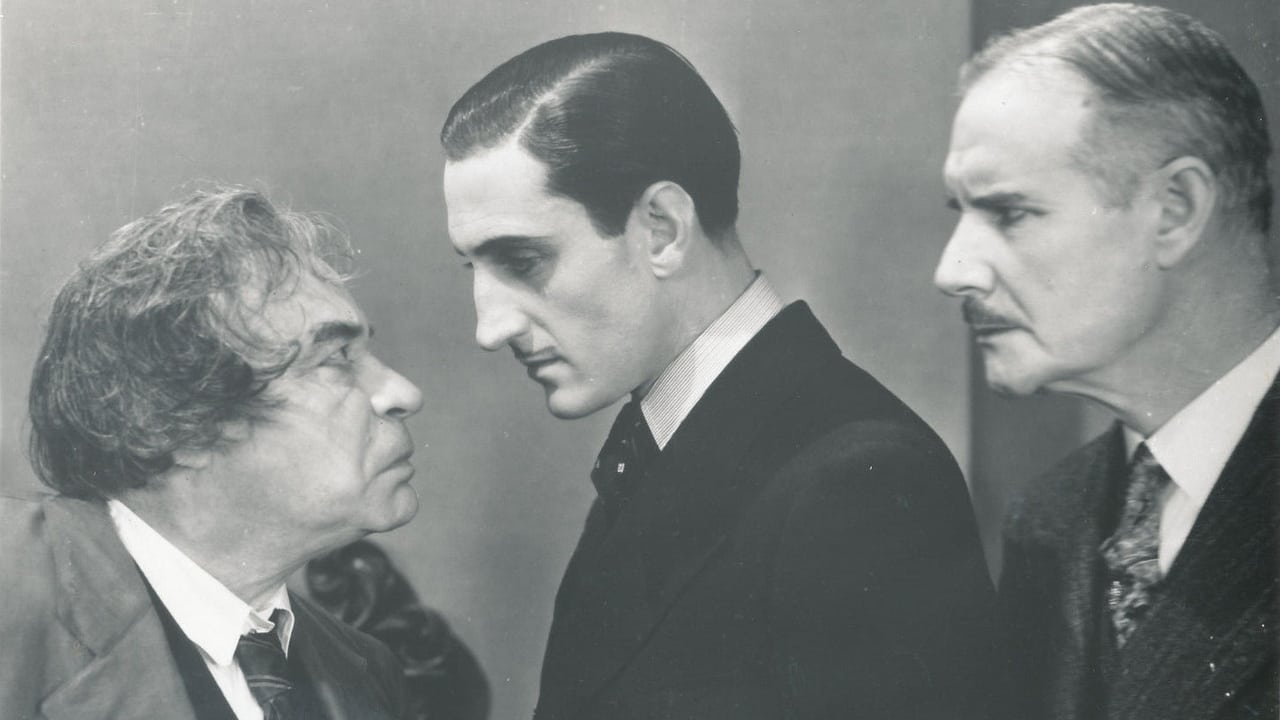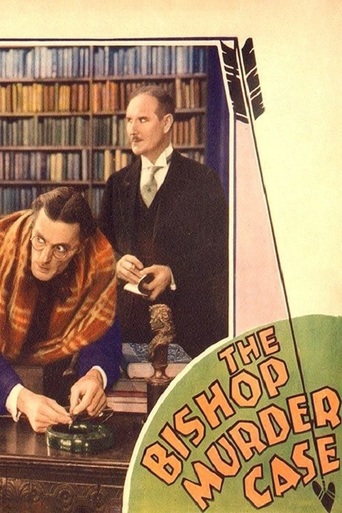

Philo Vance (Basil Rathbone) is on the case of a killer who is leaving clues related to Mother Goose nursery rhymes. The first victim is named Robin but his friends call him Cock Robin. Philo Vance was never one of my favorite movie detectives. I haven't read the books so I can't compare how his film treatment holds up to those. But Vance always seemed to lack the distinct personality traits that all the great movie detectives of the '30s and '40s had, like Charlie Chan or Nick Charles.This movie creaks but there is some effort to make it less stagey than most films of the time, which I appreciate. Rathbone obviously would go on to a bigger and better detective series with Sherlock Holmes. The acting ranges from stiff to decent. That's future writer/director Delmer Daves as Raymond Sperling. There are some decent elements to this and if it had been made a few years later it might have been really good. But it drags badly. It needed a shot of adrenaline somewhere. Again, the bland personality of Rathbone's Vance doesn't help matters at all.
... View MoreI recently learned that Willard Huntington Wright aka S.S. Van Dine the author of the Philo Vance mysteries sold the various screen rights to his stories one at a time to the various studios who would pay for them. It's the reason that Paramount, MGM, Warner Brothers and later the B independent Producer's Releasing Corporation all had a hand in the series and we have so many Philos to compare styles with.Basil Rathbone takes his turn at Philo and the Philo he creates isn't too much different from Sherlock Holmes. He's got no Watson to be his scribe and record his genius, but otherwise he's the same clever fellow who found out the secret of that hound of the Baskervilles, etc.S.S. Van Dine did create a dumb flatfoot of a police sergeant Heath for Vance to constantly show up. At Paramount and later at Warner Brothers it was Eugene Palette, here we have James Donlon who even the maid puts down regularly. I'm not sure what Heath is there for because the District Attorney just calls in Vance for help when there's an interesting case. Here we have the discovery of a dead body found on an archery field with an arrow through him. Of course the minute Vance gets there he deduces all is not as it appears. I will say this, the murderer here was a surprise to me and even more important four people die in this film, but only the first murder was a planned one. The others happened because of some unforeseen circumstances our culprit didn't see coming.That Philo, he's a regular Sherlock Holmes when it comes to solving these murders.
... View MoreBasil Rathbone is a dashing, intense-looking Philo Vance in "The Bishop Murder Case," an early talkie that shows signs of the painful transition from silents. I actually had quite a bit of trouble with the sound. I saw it on television and had difficulty understanding what was being said at times.The film, nevertheless, is very interesting, if only to see Rathbone, with those amazing eyes of his, in his pre-Sherlock Holmes days. His acting is excellent. It was also delightful to see Roland Young. Leila Hyams plays the professor's niece, and she was quite beautiful and effective. It has a good plot as well.Parts of this film came off like a stage play, probably because some of the actors were still adjusting to film technique. And the sound was darned strange. In one of the outdoor scenes, the actors sounded as if they were speaking through megaphones. Nevertheless, Philo Vance fans should certainly enjoy it, as will others from a historical perspective.
... View MoreGood effort given the primitive technology. This very early talkie does not creak like most of them did, and you believe that the same team could have done much better only a few years later.Check out the innovative scene of Hyams at the three-way mirror. Beautiful scene that directors even today should view for technique. There are several little skilled touches added to this film that make you realize that the only limitation on the talent was the primitive lower-than-low tech.Rathbone and Hyams seem more modern than the movie and they definitely do not creak.Must reluctantly give it a "5" because of old set-bound look of the film and the lack of music but it is rewarding if you can overlook such drawbacks.
... View More